
matthewking
297

A Closer Look At Seiko's First GMT - World Time 6217
In 1964, to commemorate the Tokyo Olympics of that year, the official timekeeper Suwa Seiko launched its first World Time watch - "know the time everywhere on earth, instantly" read the advertising campaigns. The watch bore an Olympic flame motif on its caseback and spawned a Seiko tradition of GMT and World Time complications that has continued to today.

This post will focus primarily on Seiko's first generations World Time, the 6217-7000 (MASWT), while also pointing out slight iterations of subsequent models and productions runs. Photographs will accompany descriptions wherever possible.
Seiko's first World Time is a beautiful watch and a practical watch, made in stainless steel with a 37mm diameter. Twenty-four timezones represented by cities throughout the world are depicted on a bi-directional rotating inner bezel, which is accompanied by a day/night indicator bezel, and distinctive auto-setting GMT hand. It originally came in two variations, released during the calendar year of 1964: one variant with a silver dial, black/blue day/night indicator, white rotating 24hr timezone bezel, and black GMT hand; and one with a gray dial, silver/brown day/night indicator, black rotating 24hr timezone bezel, and tawny GMT hand.
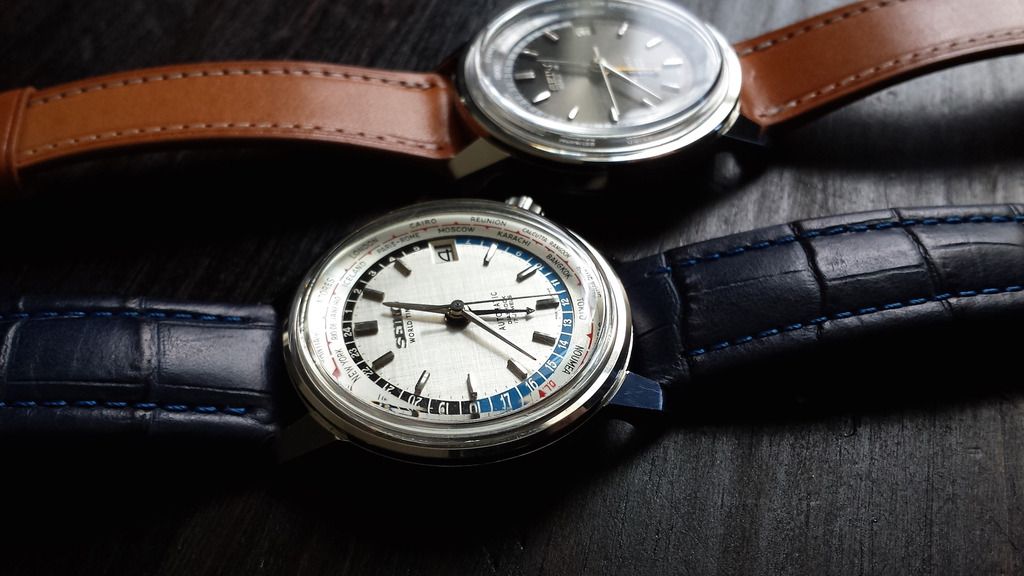
Seiko World Time 6217-7000, silver dial and gray dial, "A series"
MASWT stood for Matic Self-date World Time and was powered by the fully automatic 17 jewel cal 6217A. This complication (similar to the Rolex GMT introduced in '54 where the 4th hand is calibrated to the hour hand) birthed the now famous 6217-8000 (62MAS) used in Seiko's first Diver's watch, a line that took the company to new heights and remains a staple for Seiko.
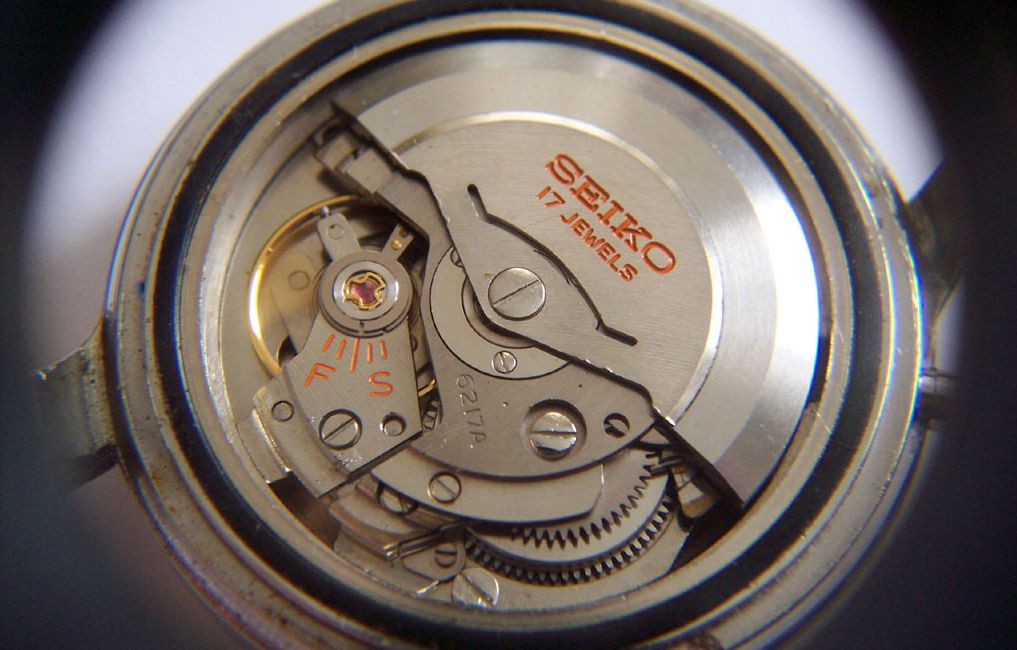 6217A, thanks for the photo Rich, The Watch Spot
6217A, thanks for the photo Rich, The Watch Spot
Finding the silver dial version in mint, all original condition has become quite difficult, while finding a NOS gray dial variant is a significant challenge. Adding to the difficulty in locating these watches in good condition is the fact that in the early 1960s, Seiko embossed their casebacks rather than stamping them. For the 6217-7000, this meant that the unique caseback bearing the Olympic flame is highly susceptible to wearing down.
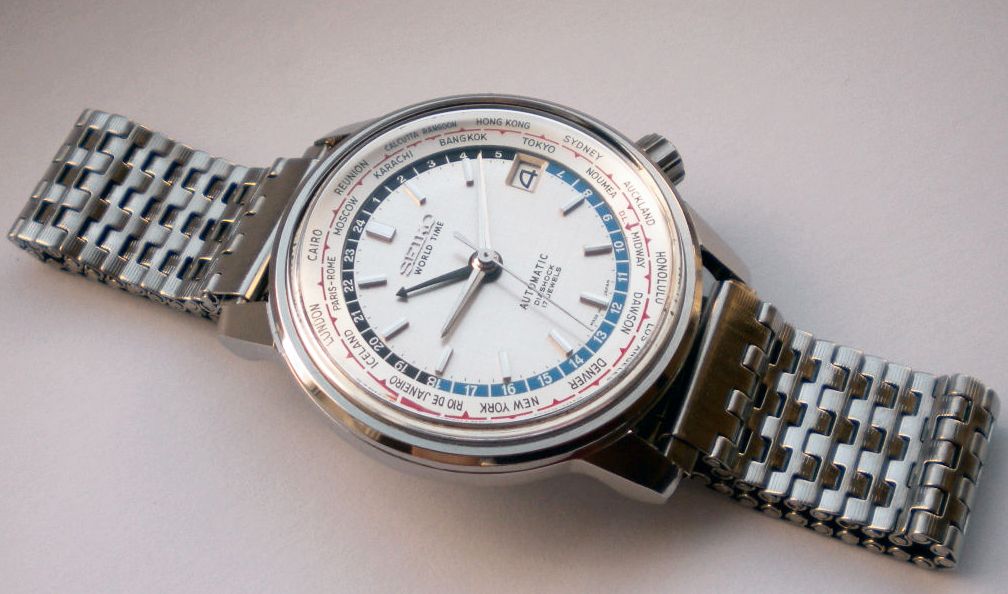 Silver dialed version of Seiko World Time 6217-7000 from 1964
Silver dialed version of Seiko World Time 6217-7000 from 1964
 Embossed back of Seiko World Time 6217-7000 from 1964, green sticker still partially intact
Embossed back of Seiko World Time 6217-7000 from 1964, green sticker still partially intact
Correct first generation Seiko World Time 6217-7000s will have the following characteristics that differentiate themselves from later generations: fitted with 17 jewel cal 6217A (opposed to cal 6117 of later models); only "Made in Japan" visible at 12o'clock on the dial (opposed to Made in Japan - and the serial number being visible); fluted crown (opposed to riveted crown); non-luminous hands and hour batons (opposed to lumed); black or tawny GMT hand (opposed to red or other colors); Olympic flame embossed on caseback (opposed to no embossed flame). These are some of the differences between first generation 6217-7000s and later versions, including those produced in 1965.

Seiko World Time 6217-7000 from 1964
Extras, FYI: Lug width is 19mm, not the more common 18mm or 20mm. Movement "wears heavy" in that you can feel it turning on your wrist. In my experience, keeps a very good power reserve, between 24 and 36 hours. Crown stem is triple action (first position rotates 24 timezone bezel, second position sets the date, third position sets time). You cannot set the date between 21:00 and 1:00 o'clock. Patent number 309752. Photos of boxes and papers original to first generation 6217-7000 below.
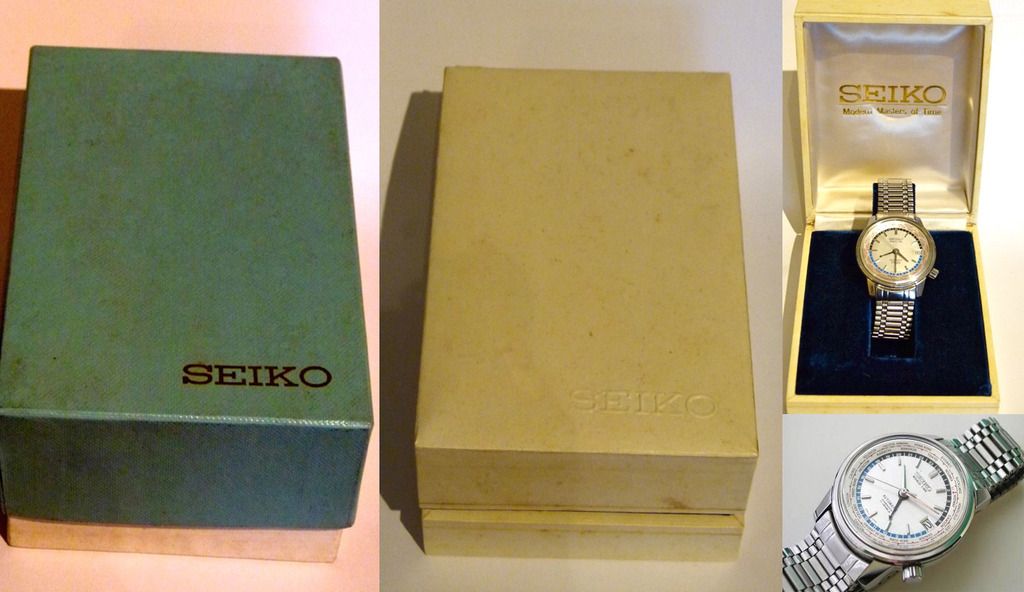
A few shots of the booklets + directions on use:

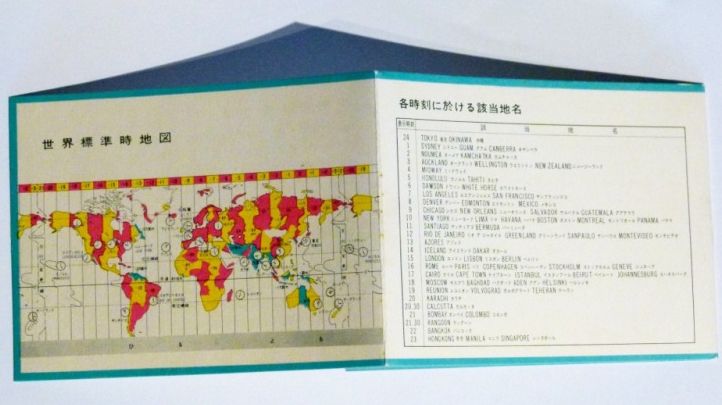
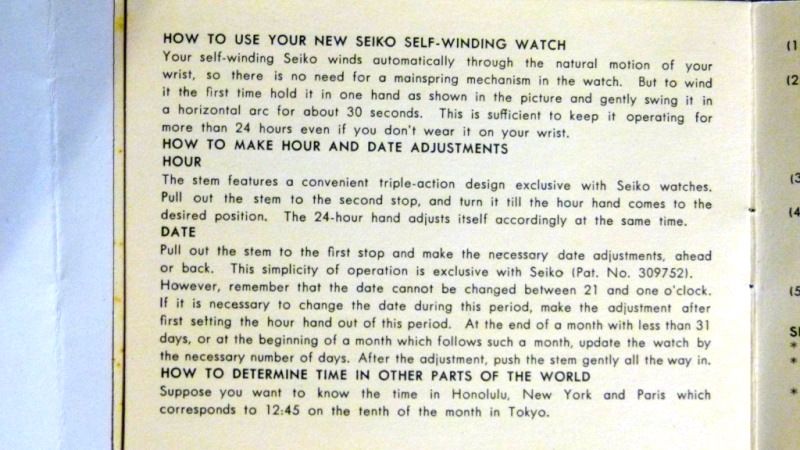
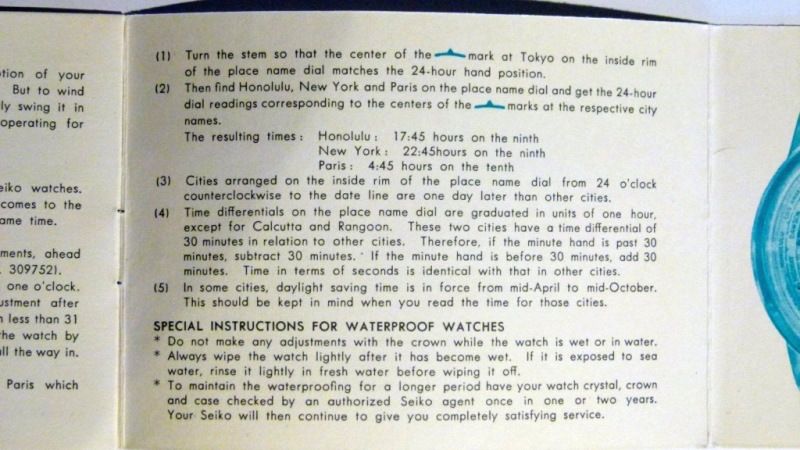

And finally a wrist shot, of me and my dad 
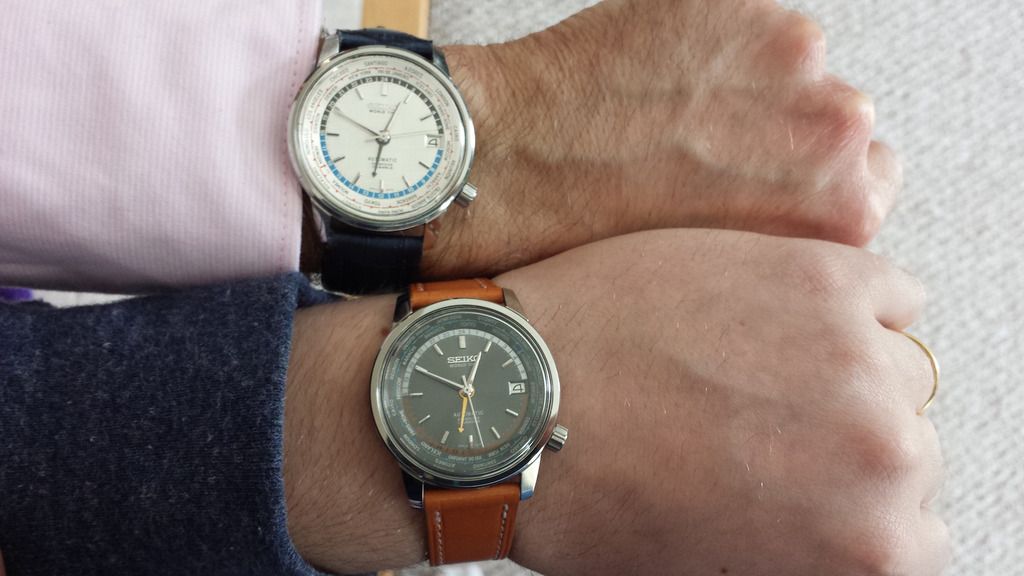
Thanks for reading,
Matt
This message has been edited by matthewking on 2015-05-09 01:05:15

A Closer Look At Seiko's First GMT - World Time 6217

Fantastic Post Matt...

Great read, Matt!

Thanks Ken!

Nice watches and great post

Thank you, sensei!

Great post

Good questions

Fabulous article

First seen on Wrist Scan, and finally, here . . .

